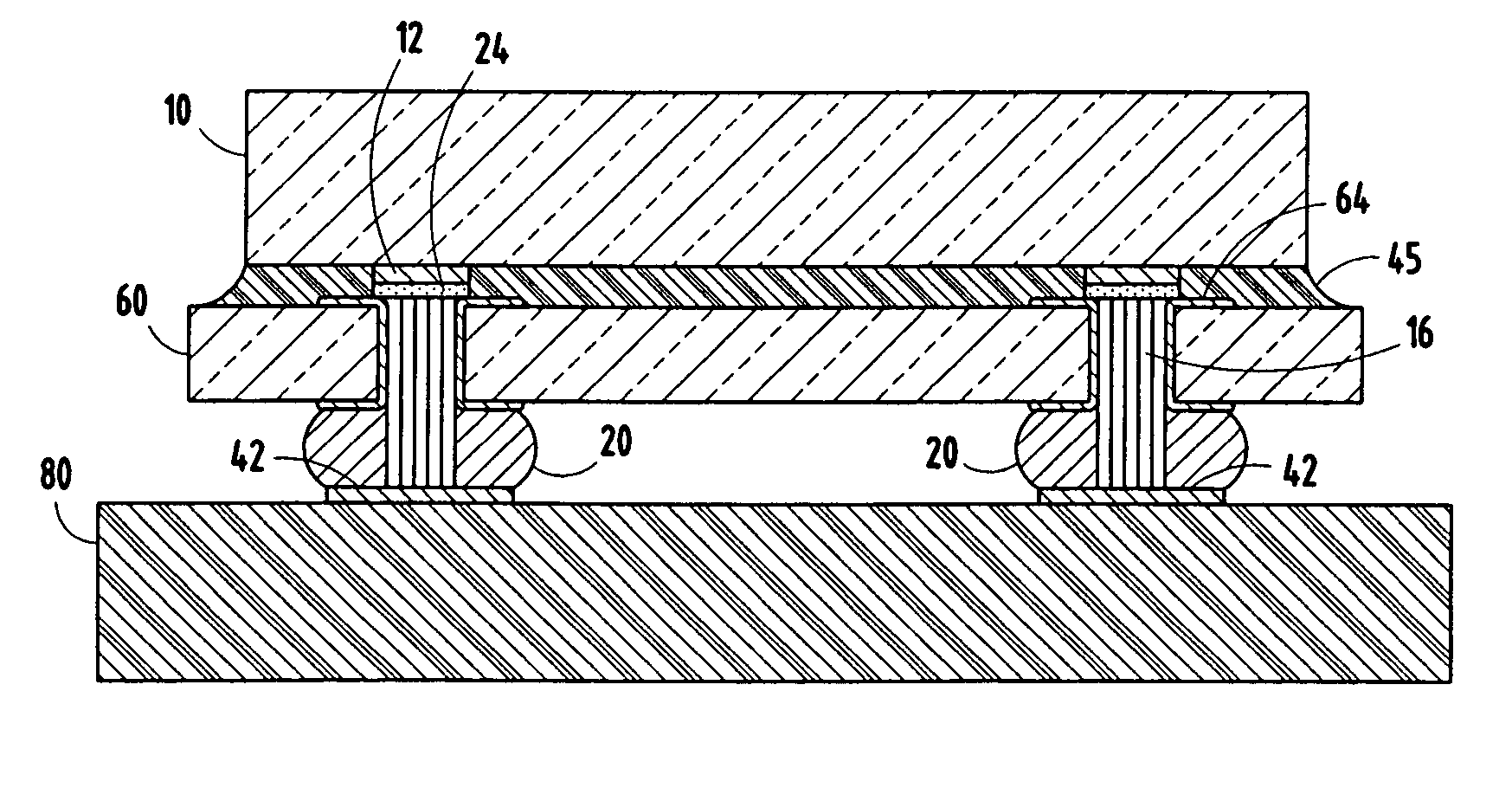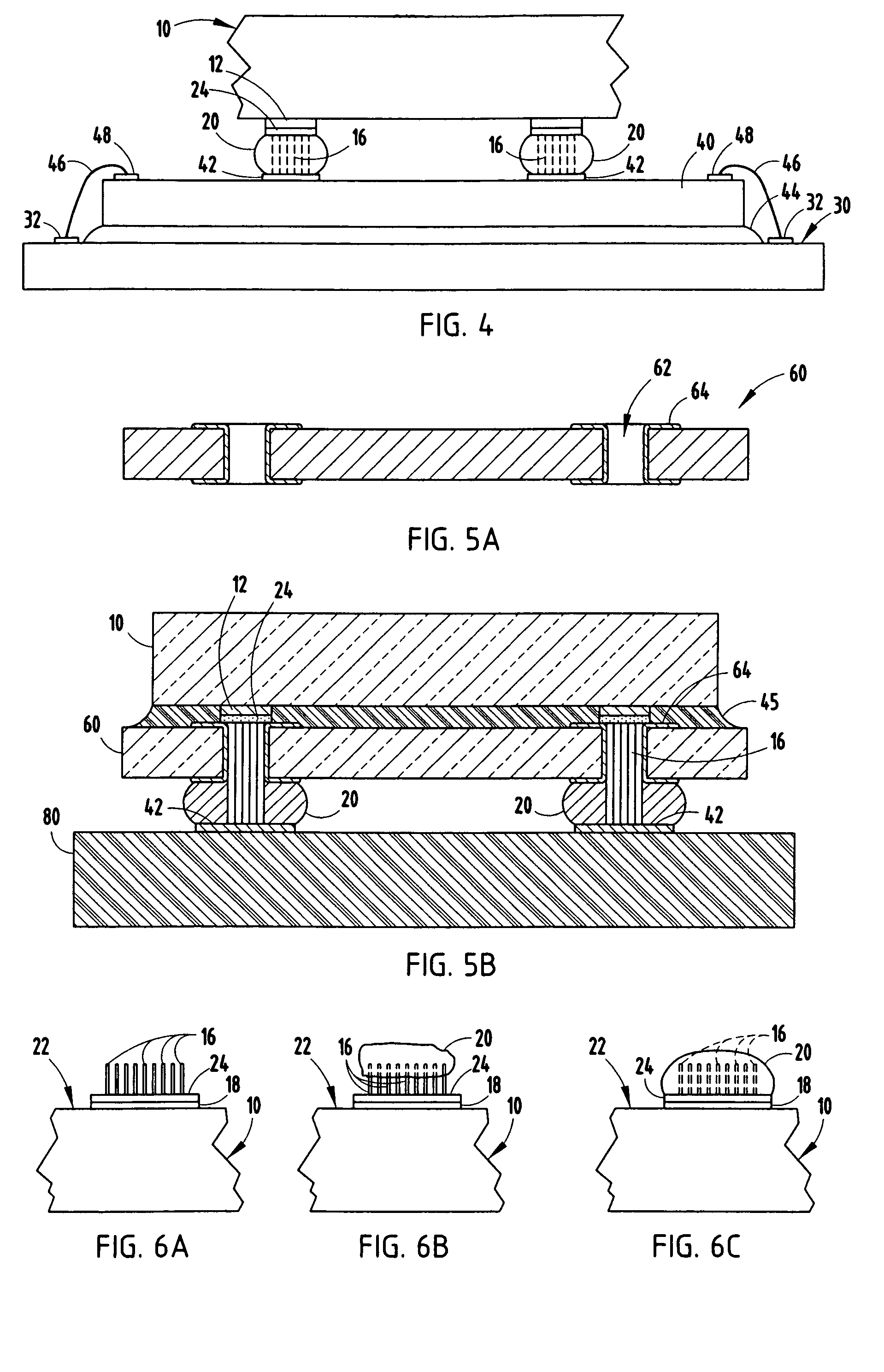Carbon nanotube via interconnect
a carbon nanotube and interconnection technology, applied in the field of integrated circuits, can solve the problems of limited use of carbon nanotube electrical conductors in these devices, high susceptibility to deleterious effects of performance characteristics of electronic devices operating in the microwave frequency range, etc., and achieve excellent performance characteristics and better electrical and thermal performance.
- Summary
- Abstract
- Description
- Claims
- Application Information
AI Technical Summary
Benefits of technology
Problems solved by technology
Method used
Image
Examples
Embodiment Construction
[0017]In FIG. 1, there is shown an integrated circuit device 10. Device 10 includes an electrically conductive input / output (I / O) pad 12 (e.g., aluminium, copper, etc.) on which a catalyst layer 24 is deposited. Suitable catalysts for growing carbon nanotubes, and techniques for depositing catalyst layer 24 are well known. Device 10 has a carbon nanotube via interconnect comprising at least one carbon nanotube 16 directly grown on I / O pads 12 of IC device 10. Normally numerous carbon nanotubes are grown on each pad. A solder bead optionally deposited on a metal terminal to complete a flip chip device in which a reflow technique may be used for electrically and mechanically connecting integrated circuit device 10 to another device or to a substrate or package carrier such as a printed circuit board. CNT growth is done at wafer level. After wafer sawing, individual IC or MEMS / NEMS device may be flip chip mounted on a substrate or second device, using flux (with optional pre-formed sol...
PUM
 Login to View More
Login to View More Abstract
Description
Claims
Application Information
 Login to View More
Login to View More - R&D
- Intellectual Property
- Life Sciences
- Materials
- Tech Scout
- Unparalleled Data Quality
- Higher Quality Content
- 60% Fewer Hallucinations
Browse by: Latest US Patents, China's latest patents, Technical Efficacy Thesaurus, Application Domain, Technology Topic, Popular Technical Reports.
© 2025 PatSnap. All rights reserved.Legal|Privacy policy|Modern Slavery Act Transparency Statement|Sitemap|About US| Contact US: help@patsnap.com



